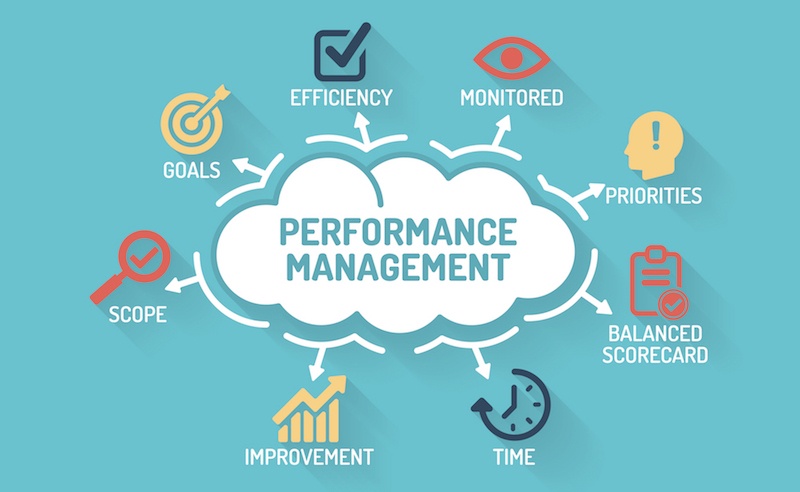What did you do the last time you started your car and saw a “check engine” or “change oil” notification? Even if you procrastinated a few days, you probably made your way to the dealership to take care of the warning.
When it comes to your business, what warnings do you have lit up on your dashboard? With a well-designed performance measurement system, you can be confident that your warnings will illuminate before a tune-up is an emergency.
What is a Performance Measurement System?
Improving an organization’s performance is a massive task. Doing it without any insight into the people powering the business is an impossible one. And so, many organizations are turning to performance measurement systems to benchmark progress against goals, across processes, services, and products.
Most organizations have some base level of the performance measurement system if they’re setting financial goals and monitoring progress toward them. But an effective performance measurement system should look well beyond just financials, and into all key performance indicators to monitor the health of the employees who make up the organization. You may have a full fuel tank, but if your check engine light is on, there’s still a problem.
Why use a performance measurement system?
Strategically approaching performance measurement can maximize employee potential – and after all, it’s the people who power the business.
When employees clearly understand how they are expected to perform, and organizations actively monitor this at an individual, departmental, and organizational level, everyone involved can focus on the goals with a higher degree of precision.
Specifically, with a performance measurement system, your organization can:
1. Clearly and easily evaluate and track job performance. If the standard is to produce three products per hour, an employee producing four is exceeding the standard and an employee producing two is below the standards.
2. Increase employee engagement. Tracking and using performance measurement data streamlines promotions, raises, and training opportunities, which in turn helps to engage employees.
3. Take a step back. When HR and business leaders look at the data as a whole, they can determine if this is an individual, departmental, or organizational issue.
“Don’ts” To Remember With Your Performance On-Demand Software Development
Of course, just building any system for performance measurement data can be dangerously misleading if the organization is looking at the correct context. Business leaders should avoid these “don’ts” and embrace a more sophisticated performance measurement system.
In implementing a performance measurement system…
1. Don’t get stuck in the past. Only looking against last year’s financials can quickly get you into trouble. Now more than ever, the business landscape is radically changing, and from year to year a slew of changes can make just last year’s results a sliver of the story to consider.
2. Don’t overlook the non-monetary value. Even though organizations are ultimately about making money, it’s not just about the money. Don’t mistake low-revenue generating departments as poor performing ones, and instead, establish all forms of adding value – including development, innovation, and process efficiency.
3. Don’t forget to grow. Instead, value and measure innovation, learning, improvement, asset creation, and general growth.
4. Don’t neglect context. Diversity your metrics, the Harvard Business Review recommends, to avoid anyone being able to easily manipulate them to tell a specific story. Not only does this make data and analytics more stable, but it also helps layer in some common sense. For example, an apparent turnover spike in a specific department could cause leadership to examine the department leader; however, in context, the business may remember that sales declined and automation increased for that department.
5. Don’t forget to look ahead. Way ahead. Focusing just on short-term goals may really sell the organization short. For example, if in two years, employees will all need to be more technically adept, continuing to reward them for using an old process doesn’t make sense in the long term.
Why Cloud Performance Monitoring Makes All the Difference
So your organization has decided to harness all of your people data into a performance measurement system. Moving your system to the cloud enables real-time, anywhere access for all the key players, and planning to maximize that advantage is something to keep in mind during development. But first, you need to ask several key questions to aid the on-demand software development and implementation specific to your business needs. These questions include:
• How will you measure non-financial performance?
• Why will you use the measures you’ve chosen? What value do they add?
• What will do you with the results?
• Who is responsible for using the results?
• Who should see the results? And how should they be presented?
Ultimately a strong system partners both financials and line managers together to cultivate meaningful discussions and collective actions that improve the bottom line in a practical, sustainable way that maximizes people’s power.
Thanks to a well-designed performance measurement system, you can feel confident any “service required” indicators aren’t just a malfunction, and get ahead of any maintenance issues.
We can help you stay ahead of performance maintenance issues with our custom solutions for your outsourced corporate development needs, whether you need top talent engineers staffing support, QA testing services, more access to IT talent, or all of the above. Contact info@techgenies.com today to take your performance measurement system to the next level.


